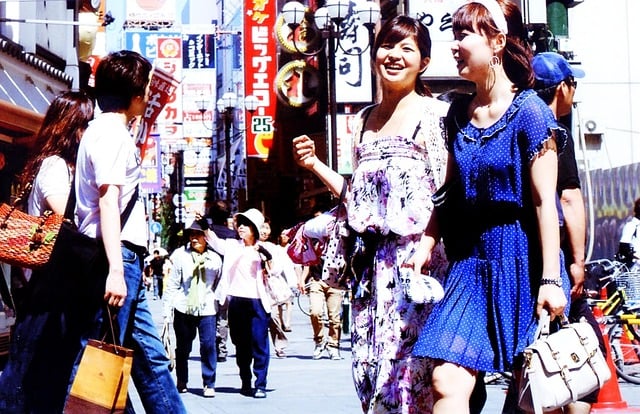Top 5 Mistakes Students of Japanese Make
Japanese isn’t as hard as it looks. No really, it isn’t! Compared to other Asian languages like Chinese with its thousands of complicated characters or Vietnamese and its tonal variations, Japanese is quite straightforward. Japanese grammar is relatively simple (no plurals or future tense!) and sounds are created with a consistent consonant and vowel pattern. No surprises there! However, there are a few common mistakes that foreigners, especially native English speakers, make when speaking Japanese. Make sure you know how to avoid these errors so you sound like a local when speaking Japanese:
1. Pronouncing the “R” sound incorrectly
Photo via Wikipedia / Pmx
A common stereotype for Japanese people when speaking English is that they pronounce their R’s like L’s. Ever wonder why? In Japanese, the R sound is actually pronounced as an L! This is one of the harder pronunciation points for foreigners while speaking Japanese. The R sound is soft, somewhere in between an English pronunciation of R and L. Spanish speakers will recognize it is close to a soft Spanish R. The key is to lightly touch your tongue to the back of your front teeth.
2. Using polite or informal speech incorrectly
Japanese has essentially three levels of politeness which are very important in conversation and in the Japanese culture. The way someone addresses you defines your relationship: teacher and student, boss and employee, parent and child, friend and friend, brother and sister, etc. One of the hardest verb forms to learn and put into practice is keigo, the ultra-polite or honorific speech form. Keigo is basically a whole separate language, with its own verbs and conjugation. It should be used when an employee speaks to an employer (at least for an interview and the beginning of a job), shopkeepers to clients, and pupil to sensei. The normal polite verb conjugation (verbs ending in complete form) should be used with teachers (after a stronger relationship is built), to elders, in the work environment, and when meeting people for the first time. Casual form (shortened verbs) can be used between friends or colleagues of the same age and between family members.

Photo via Pixabay / akira535
3. Not using common responses
Japanese are very expressive and good listeners. It is not enough to just listen to someone talking, the listener needs to show that they are actively listening. One way to do this is by using common responses that every Japanese person uses during a conservation. Many of these are sounds: “Eee…”, “Aaa..”, “Mmm..” “Souu..” ; others are short expressions: “Sou desu ka?” (Is that so?), “Honto?/ Honto ni?” (Really?), “Ii ne” (That’s nice), or “Uso!” (No way!). To show surprise you should say “Ee?” with the intone raised at the end of the word. Using these responses will make you sound more natural and like a native speaker during a conversation.
Learning Japanese? Take our free Japanese level test now!
4. Not saying someone’s first name
Japanese can seem a little strange in that it doesn’t really use the word “you.” There exists the word “anata,” which is the formal term for “you,” however it is rarely used in conversation. Young men can use the informal “umae,” but it isn’t recommended for foreigners to use this unless they are very close with the person they are talking with. The Japanese prefer to use a person’s first name when addressing them as a sign of respect. Always makes sure to add a title after the person’s name: “-sama” for honorific, “-san” for formal, and “-chan” for casual. Using a first name can get tricky if you have just met someone for the first time and immediately forgot their name! An easy way to ask someone’s name mid-conversation is to ask, “Onamae wa?” / “Your name?” or “Gomen, onamae wo wasurechatta.” / “I’m sorry, I forgot your name.” The person won’t be annoyed you forgot their name, instead honored that you took the time to ask for it again.
5. Shaking Hands instead of Bowing
Rarely will you see two Japanese shaking hands, even in formal business meetings. Bowing is the preferred greeting and the lower the bow, the more respect shown. If you are meeting someone for the first time, make sure to stick to a small bow, instead of sticking your hand out. It will show your respect for local culture and put the other person at ease. Young people nowadays, especially teenage girls, have begun to hug each other as a greeting. Just make sure you are close friends with the person before reaching out to hug! Many Japanese would feel uncomfortable if you tried to hug them without a certain level of closeness first.



